This article was co-authored by wikiHow Staff. Our trained team of editors and researchers validate articles for accuracy and comprehensiveness. wikiHow's Content Management Team carefully monitors the work from our editorial staff to ensure that each article is backed by trusted research and meets our high quality standards.
This article has been viewed 457,877 times.
Learn more...
The average human tongue is about 10 centimeters (4 in) long, has thousands of tastebuds and performs many important functions related to speaking and eating.[1] Unfortunately, certain conditions like tongue-tie can negatively affect the tongue’s length and range of motion. Whether it’s due to a medical condition or aesthetic preference, there are surgery options and exercises which may help you get a longer tongue.
Steps
Choosing Surgery
-
1Decide whether or not surgery is the best option. Tongue-tie, or ankyloglossia, is a disorder which restricts the movement of the tongue and makes it difficult for the host to stick his or her tongue out of their mouth. With ankyloglossia, the band of tissue connecting the tip of the tongue to the floor of the mouth (lingual frenulum) is abnormally short resulting in oral complications.[2] You should consider surgery if you or your child have restricted tongue movement due to ankyloglossia.
- Ankyloglossia affects more than speech. A person with the condition may also experience problems with oral hygiene, dental health, eating, digestion and sexual function.
- Ankyloglossia can be caused by environmental or genetic factors.
- Tongue-tie surgery can be performed on children, infants or adults.
- Ankyloglossia can negatively affect the ability of an infant to breastfeed.
- If you’re the parent of a child with ankyloglossia, surgery is often the best option. In most cases, the lingual frenulum will not stretch or break on its own.
-
2Undergo lingual frenectomy surgery. A lingual frenectomy is the most common procedure performed when the lingual frenulum results in restricted tongue movement. This is a relatively simple procedure in which an oral surgeon uses a pair of sterilized scissors to completely remove the lingual frenulum.
- A lingual frenectomy is a short, 10-15 minute operation usually performed with local anesthesia.[3]
- There aren’t many blood vessels in the lingual frenulum, so discomfort should be minimal during the procedure.
Advertisement -
3Undergo lingual frenuloplasty surgery. A lingual frenuloplasty is performed when the lingual frenulum is too thick or additional repair is needed after a lingual frenectomy. A lingual frenuloplasty is a more exact surgery which aims to alter the lingual frenulum without completely removing it.
- The goal of lingual frenuloplasty is the same as a lingual frenectomy procedure; both surgeries aim to increase the tongue’s length and range of motion.
- A lingual frenuloplasty is done under general anesthesia. Surgical tools are used, and the oral surgeon uses stitches on the resulting wound.
-
4Understand potential complications following surgery. Postoperative complications associated with a lingual frenectomy and frenuloplasty aren’t usually serious but can include infection, bleeding and nerve damage. Because lingual frenuloplasty surgery is more involved, there are additional risks of scarring and negative reactions to anesthesia.
- Both surgeries can be performed using a scalpel or laser. If you have laser surgery to correct your ankyloglossia you won’t need stitches and there is usually less pain and bleeding after surgery.
-
5Perform tongue exercises. Tongue exercises should be performed after surgery to further develop tongue’s muscles, length and range of motion.[4] These exercises include:
- Stretching your tongue up to your nose and down to your chin. Repeat this exercise three or four times.
- Moving your tongue back and forth across the outside of your top lip.
- Closing your mouth and moving your tongue between your right and left cheeks.
- Moving your tongue in and out of your mouth several times.
Practicing Kechari Mudra Yoga
-
1Understand the basics of Kechari Mudra yoga. Kechari Mudra is an advanced yoga practice in which the practitioner uses their tongue to strengthen their body and raise their level of consciousness. The idea with Kechari Mudra Yoga is to slowly increase the length of the tongue until it’s eventually long enough to enter and stimulate certain areas in the nasal cavity.[5]
- With continued practice, Kechari Mudra may also help the practitioner fight diseases and lower their breathing rate.
-
2Begin practicing Kechari Mudra. While sitting in a comfortable position, roll your tongue up to touch your upper palate. See how far back your tongue is able to go. You may only be able to touch your hard palate when first starting out.
- Hold your tongue back until you start to feel pain, then rest your tongue in its normal position.
- As you continue practicing Kechari Mudra Yoga, your tongue should stretch and reach further back towards your uvula.
- After you gain some confidence, you can practice Kechari Mudra while engaging in light activities.
-
3Seek the guidance of an advanced yogi. In the final stages of Kechari Mudra, your tongue should be long enough to go behind your uvula and up into your nasal cavity. You’ll reach this stage more safely and successfully with the help of an expert yogi to assist you in your practice.
- Your guide may recommend the application of butter or ghee to draw out and lengthen your tongue. At this point, your tongue should be long enough to reach the center of your eyebrows.
- Even with a guide, Kechari Mudra may take months or years to master.
References
- ↑ http://www.huffingtonpost.com/2014/10/11/tongue-facts-health-info_n_5952850.html
- ↑ http://www.mayoclinic.org/diseases-conditions/tongue-tie/basics/treatment/con-20035410
- ↑ https://www.mayoclinic.org/diseases-conditions/tongue-tie/diagnosis-treatment/drc-20378456
- ↑ http://www.speech-language-therapy.com/index.php?option=com_content&view=article&id=41:tie&catid=11:admin
- ↑ http://www.yogicwayoflife.com/kechari-mudra-the-tongue-lock/
About This Article
To get a longer tongue, start practicing Kechari Mudra yoga by rolling up your tongue and trying to touch your palate as far back as possible. Hold your tongue in position until you start to feel pain, then let it rest. Repeat the process over several months until your tongue comes close to reaching your uvula before seeking the assistance of an experienced yogi. Follow their instructions to further lengthen your tongue, which could include applying butter or ghee. For tips on how to decide if surgery would be your best option to get a longer tongue, read on!



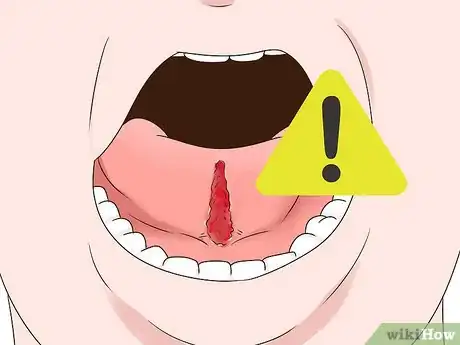

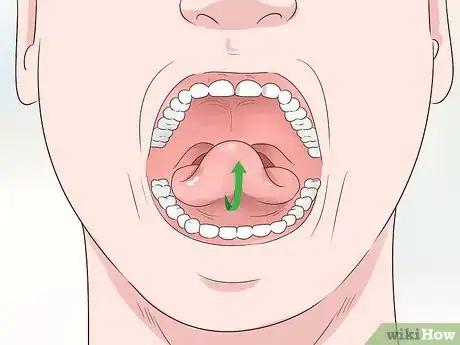




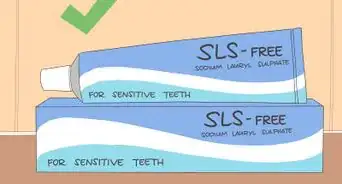
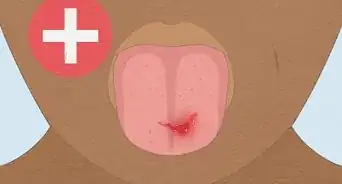
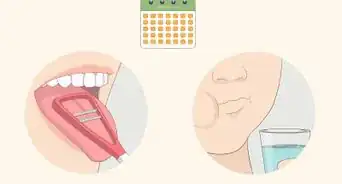



















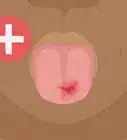



































Medical Disclaimer
The content of this article is not intended to be a substitute for professional medical advice, examination, diagnosis, or treatment. You should always contact your doctor or other qualified healthcare professional before starting, changing, or stopping any kind of health treatment.
Read More...